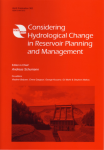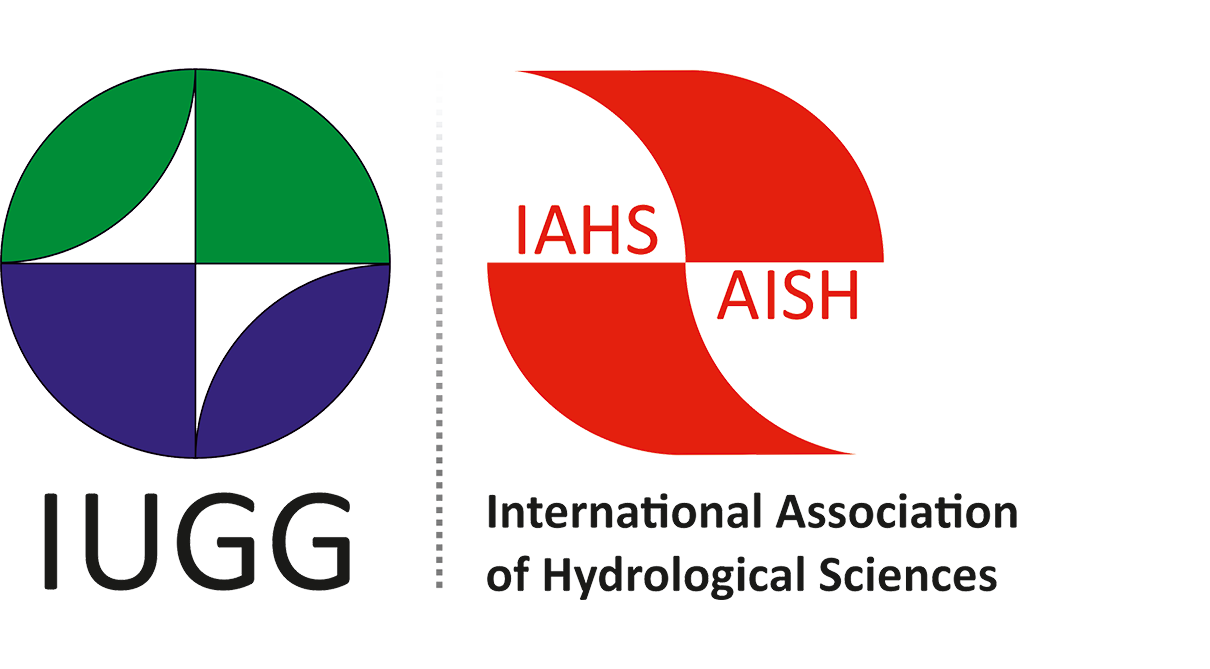Considering Hydrological Change in Reservoir Planning and Management Author / Editor: A. Schumann, V. Beluaev, E. Gargouri, G. Kuczera, G. Mahé & S. Mallory
Publication Number: 362
ISBN Number: 978-1-907161-40-7
Year: 2013
Pages: 214 Price: £61.00 This book provides an excellent overview of contemporary problems in reservoir management, from planning aspects of large multi-objective reservoirs and regarding small farm dams in Africa, to governmental matters, to sedimentation issues, to climate change impacts. Given the stochastic nature of hydrological conditions, the limited information available to characterize it and the multi-faceted targets of reservoir management, reservoir planning and operation are ambitious challenges for hydrologists and water managers. Reservoir management considers supply and demand. Demand includes the objectives of water management, but also the expectations of society, which develop with time; ecological targets for reservoir operation are now more important, social aspects and requirements are relevant and there are new constraints and objectives for operation of even older dams. The supply side has become more uncertain with increasing awareness of climate change causing growing concern about its impacts on the performance and reliability of existing and planned water management systems.
A. Schumann, V. Beluaev, E. Gargouri, G. Kuczera, G. Mahé & S. Mallory Contents for Considering Hydrological Change in Reservoir Planning and Management | Title | Pages | File | Preface by Andreas Schumann
Andreas Schumann | iii-vi |  | Research on the jointly optimal water-supply operation of a multi-reservoir system in Jinchang City of Shiyang River basin, China
Tang Jiakai, Qian Ju, Han Xiaoyan, Liu Fen & Wan Liu | 13-23 |  | Improving the future performance and reliability of multi-reservoir systems by multi-objective optimization
Ruben Müller & Niels Schütze | 24-32 |  | A simulation study on modifying reservoir operation rules: tradeoffs between flood mitigation and water supply
Cherry May R. Mateo, Naota Hanasaki, Daisuke Komori, Kei Yoshimura, Masashi Kiguchi, Adiso | 33-40 |  | Flood risk mitigation by reservoirs - application of multivariate statistical methods for risk assessments downstream
Markus Schulte & Andreas Schumann | 41-48 |  | How flexibility in urban water resource decisions helps to manage uncertainty?
Mohammad Mortazavi, George Kuczera & Lijie Cui | 49-56 |  | Small farm dam capacity estimations from simple geometric relationships in support of the water use verification process in the Inkomati Water Management Area
Tendai Sawunyama | 57-63 |  | Identification of suitable for aquifer recharge sites in Moura region (southern Portugal)
Sina Abadzadesahraei | 64-72 |  | Real-time dynamic control of the Three Gorges Reservoir by coupling numerical weather rainfall prediction and flood forecasting
Yun Wang, Hua Chen, Dan Rosbjerg, Henrik Madsen, Peter Bauer-Gottwein & Jinxing Wang | 75-82 |  | Impact analysis of long-term stochastic inflow prediction and its uncertainty on reservoir operation during drought situations
Daisuke Nohara, Hiroko Miki & Tomoharu Hori | 83-90 |  | Reservoir operation and the frequency of decision making
Stephen J. L. Mallory | 91-98 |  | Ostrom’s institutional design principles and reservoir management: a study on adaptation to climate variability and change
Ana Cristina Souza da Silva, Carlos De Oliveira Galvão, Gerald Souza da Silva & Francisco | 101-106 |  | Reservoir operating rules across a range of system complexities and degree of operator competencies
Stephen J. L. Mallory, Jenny Pashki, Celiwe Ntul & Beason Mwaka | 107-112 |  | Land-cover on two great basins in Algeria and Morocco, sediment transport and dams
Mahe, G, et al | 115-124 |  | Using caesium-137 measurements to establish a sediment budget for the catchment of a small reservoir in southern Italy
Paolo Porto, Desmond E. Walling & Carmelo la Spada | 125-133 |  | Effects of land use and climate changes on small reservoir siltation in the agricultural belt of European Russia
Vladimir R. Belyaev, Valentin N. Golosov, Maxim V. Markelov, Nadezda N. Ivanova, Eugenia N | 134-145 |  | Impact of the Ertan Reservoir on reduction in sediment load in the lower Jinsha River, China
Xinbao Zhang, D. L. Higgitt, Qiang Tang, Yi Long, Xiubin He & Anbang Wen | 146-152 |  | Water consumption from hydropower production: review of published estimates
Tor Haakon Bakken, Ånund Killngtveit, Kolbjørn Engeland, Knut Alfredsen & Atle Harby | 155-160 |  | Impacts of hydropower station daily regulation on flow regimes downstream
Chen Qihui, Yan Yan, Wang Yinli, Chen Yunyun & Qiu Liyin | 161-165 |  | Cumulative influence of small reservoirs on downstream flows in a semi-arid catchment: Merguellil, central Tunisia
Andrew Ogilvie, Patrick Le Goulven, Christian Leduc, Roger Calvez, Mark Mulligan & Mohamed | 166-171 |  | The effect of small impoundments on nutrient transport in a suburban watershed
Yuta Shimizu, Shin-Ichi Onodera, Koki Onishi, Mitsuyo Saito & Masashi Yoshikawa | 172-178 |  | Evaluation of reservoir operation flexibility under variable hydrological conditions with user defined rules
Gokcen Uysal, Aynur Sensoy, A. Arda Sorman, Turker Akgun & Tolga Gezgin | 181-186 |  | Evaluation of changes in deficit volumes: support for protection of localities suitable for construction of reservoirs
Martin Hanel, Ladislav Kašpárek, Martina Peláková, Adam Beran & Adam Vizina | 187-192 |  | Assessing the sensitivity of an Alpine reservoir to hydrological change and improving its operation by adaptive optimization
Anghileri Daniela, Pianosi Francesca & Soncini-Sessa Rodolfo | 193-198 |  | Assessing the capacity of water resources to meet current and future water demands over the Ebro catchment (Spain)
Marianne Milano, Denis Ruelland, Alain Dezetter, Julie Fabre, Sandra Ardoin-Bardin & Eric | 199-206 |  | Assessing climate change impacts on operation and planning characteristics of Pong Reservoir, Beas (India)
B. Soundharajan, Adebayo J. Adeloye & Renji Remesan | 207-212 |  |
| |


